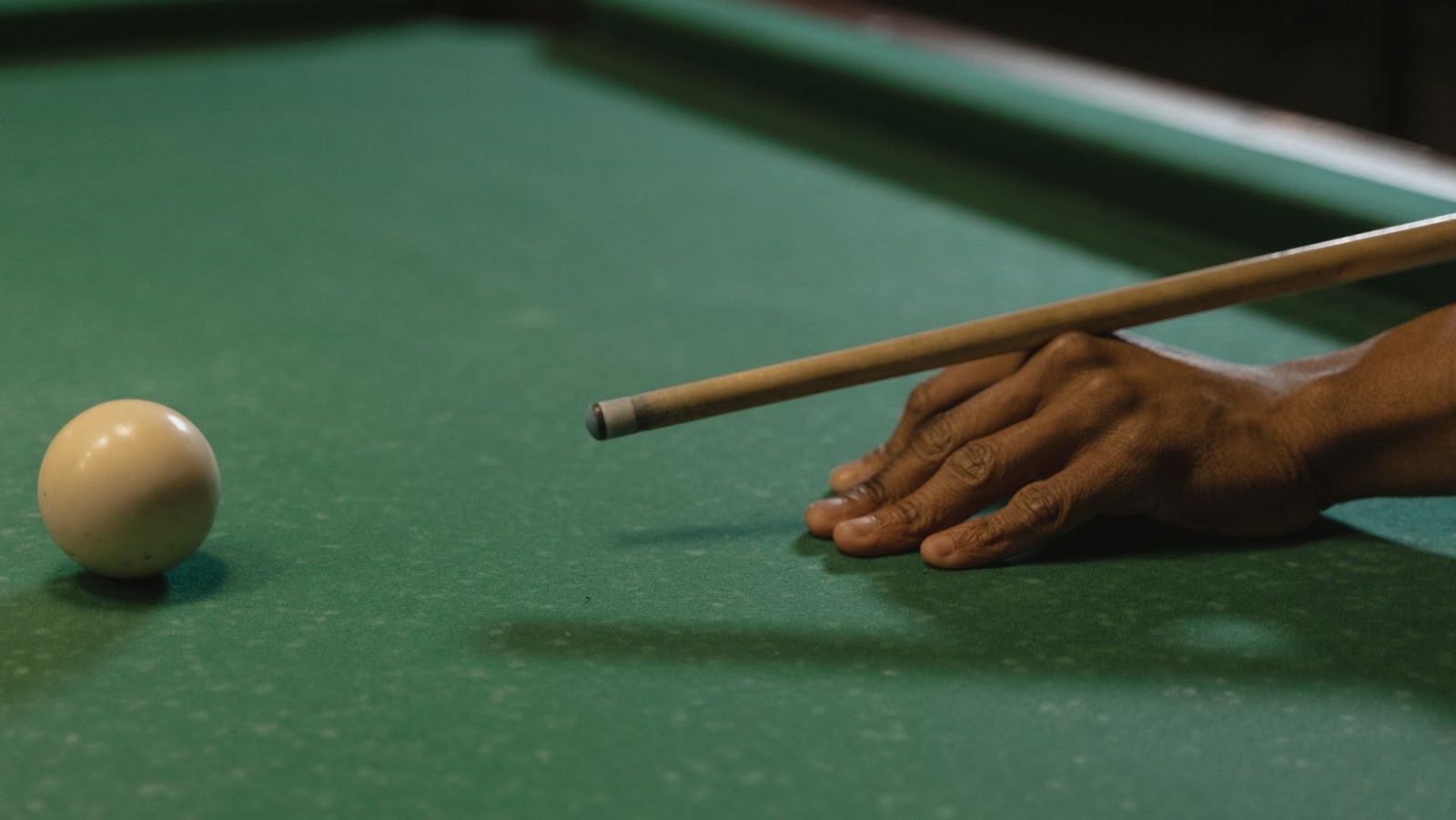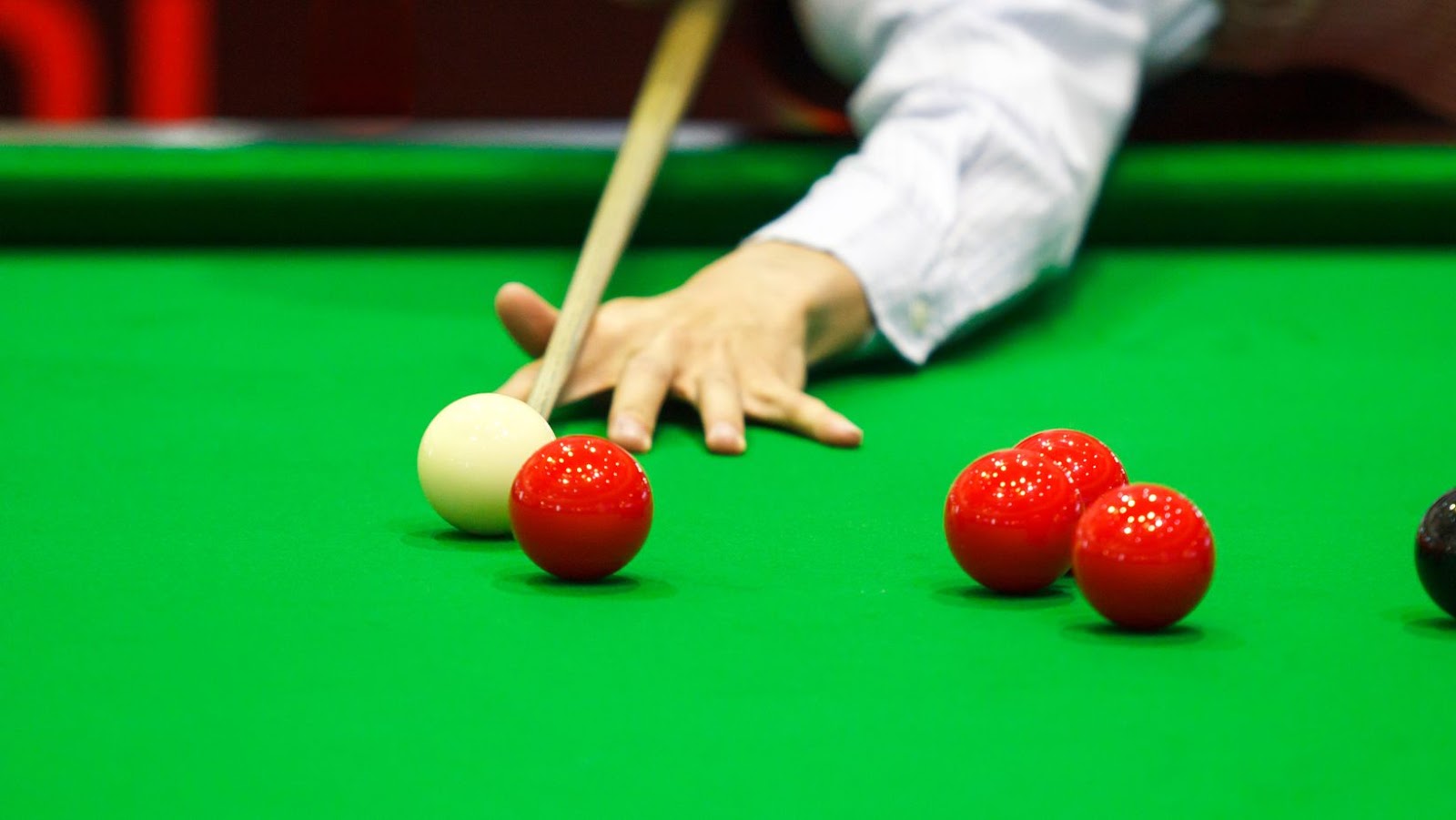Are you confused about which type of cue to go for when playing a game of snooker or pool? This article discusses the differences between snooker and pool cues, helping you make an informed decision about which one is best for you.
You’ll soon be able to impress your friends and family with your carefully selected cue!
Snooker Cue vs Pool Cue
Cues, or rods, are essential apparatus in both snooker and pool. Although the purpose of a cue is the same for both games — to hit the balls on the playing surface — each type of cue has its own characteristics. To be successful at either game requires knowledge of how to choose, handle and use cues appropriately. Which cue you choose will depend on what game you’re playing and your personal preference. Snooker cues are generally longer, thicker and heavier than pool cues. A standard snooker cue is usually about 57-59 inches in length with a tip diameter of 10 mm (3/8 inch) and a weight between 19-21 ounces; these specifications have been set as standard by World Professional Billiards & Snooker Association since 1901.
In comparison, pool cues measure from 48-52 inches long with a smaller tip size (around 9 mm or 2/5 inch). The weight ranges from 18-21 ounces but can vary significantly depending on what kind of wood, shaft taper and accessories you decide to use for your set up.
Both snooker and pool cues can be made out of different materials such as sustainable hardwoods like ash or maple; fiberglass reinforced resin; aluminium with comfortable rubberized handles; steel – which is often found in “house” type cues – or graphite which offers increased stiffness at impact moment. Many people also opt for custom cues assembled using selected parts purchased separately such as cork wraps, wooden ferrules, exotic woods butts etc., thus creating their own personal “signature” cue!
Differences in Construction
The construction of snooker cues and pool cues have some notable differences even though they serve the same purpose. Snooker cues are generally lighter with thinner shafts, whereas pool cues weigh more and have thicker shafts. The length of a snooker cue is usually 57–58 inches, and a pool cue can be between 48–53 inches. Snooker cues often have come in designs with many intricate details on them, whereas most pool cues usually have more consistent designs. As for the tip of the cue, snooker tips are larger than those used for pool to help players impart better spin on their shots. This makes it easier to pocket balls since you can hit them harder without fear of miscuing. The material an individual cue is made of is also different between the two games. Snooker cues are made from hardwoods like ash or maple; while pool cues are commonly constructed out of maplewood but can also be found in rosewood, ebony or mahogany depending on what is available in shops or online stores. Both gold-plated joints and brass fittings are used when it comes to constructing snooker and pool cues respectively due to each metal’s particular strength characteristics ensuring that the overall structure retains integrity when shooting off-centre shots during games such as Snooker or Pool!
Differences in Shafts
The shaft of a snooker cue is usually made from ash wood and tends to be more rigid than that of a pool cue. The shaft must provide strength and accuracy since the snooker establishment provides standardized cues which all have identical weight, balance, and flexibility. Pool cues on the other hand come in unlimited variations when it comes to choices of shapes, weights, materials, and sizes. Pool cues have a tendency to be slightly lighter in order for players to move their cue around more quickly.

When it comes to tips for snooker cues, players usually use a nine-layered leather tip that is harder than those used in pool cues. Snooker requires an accurate tip with good control due to the longer lengths of some shots while pool requires a softer tip because shots are shorter and controlled power is key. Overall, aim and accuracy are highly prioritized when playing both snooker and pool; however slight differences in shafts give each game unique characteristics that can make all the difference when perfecting either skill.
Differences in Tips
Snooker and pool cues have different tips, which require different techniques for each game. Snooker tips tend to be slightly larger than pool tips and are made of hard leather. The tip size will vary depending on the size of your hand, but is usually around 10-13mm. This helps you make more precise shots which is essential in snooker. Pool cues, on the other hand, have smaller tips (usually 8-10mm) and are a softer material, usually plastic or rubber. This helps to give you better control when shooting as well as a better grip on the ball. Pool cues also typically have a round ferrule at the top to give you an even greater level of control over your shot. Both snooker and pool cues come with adjustable weights for greater accuracy and improved shooting capabilities.
Differences in Length
When talking about cues, many people refer to them interchangeably; however, the truth is that they are quite different. Snooker cues and pool cues vary in length, weight, shape and tip diameter. These variations result in a great difference of play.
Length – The difference in length between a snooker cue and a pool cue can be quite striking; snooker cues have an overall length of around 57-58 inches, while pool cues have a length of around 48 to 52 inches. This is largely due to the fact that snooker tables are much larger than those for pool — 12×6 feet versus 8×4 feet. A longer cue helps players reach shots that would otherwise be impossible with smaller tables.
Weight – Pool cues tend to weigh 17-20oz., whereas snooker cues usually weigh about 19-27 oz.; this additional weight provides extra power on long shots as well as helping with accuracy on shorter range shots. As an example: some players prefer a heavier cue for long potting challenge shots where straight accuracy is most important.
Shape – Another difference between these two types of cue is their shape: both have more or less the same shaft thickness but they differ significantly in the butt end; usually pool cues tend to have round or smooth shoulders where on the other hand snooker cues have square shaping. This makes it easier for players to move their hand along the handle which helps maintain grip and feel when playing difficult shots.
Tip diameter – Lastly, even though both types come with medium tips (with sizes ranging from 8–12mm), snooker tips tend to be slightly larger than those found on pool cues (usually 10–11mm). The extra size makes it easier for players to spread their spin when playing long potting challenge shots such as closing up baulks or cutting a scored ball away from its neighbors.
Differences in Use
Snooker and Pool cues have subtle differences that have the potential to make a large impact in how the game plays. While both games are played on a billiard table, there are actually quite a few differences between a snooker and pool cue.
Firstly, snooker cues tend to be longer than pool cues. Snooker cues also feature smaller tips than pool cues—pool cues may range from 8-10 mm in size while snooker tips range from 6-8mm in size. This difference is necessary as the smaller diameter of the snooker tip helps control the contact between cue and ball in ‘double kiss’ shots where more accuracy and precision is needed, whereas with a larger tip for pool this increased contact makes it harder to send balls off at an angle typically needed for pool trick shots.

Additionally, due to the tight table pockets used for snooker tables, splicing is often added into extra length of the butt of a snooker cue while splicing is only rarely used with pool cues as they are generally not needed given their shorter length. Splashing at closer angles during trick shots can often become much easier when using a spliced joint within your cue, making this another significant difference in use between these two sports.
Pros And Cons of Snooker Cues
Though a snooker cue and pool cue may look similar, many differences lie between the two. A snooker cue is much longer than a pool cue. It typically measures at 57-59″ (145-150cm), where as a pool or billiard cue is 48″ (122cm). All cues have tips ranging from 8mm to 11mm, but many professional snooker players tend to use 10mm tips for extra accuracy. Although the common wood used for both cues is Hardrock Maple, some professional players opt for more exotic woods with lighter grains like cherrywood, ebony, snakewood and lancewood so that the points of their handcrafted cues are visible through the finish. Snooker cues also differ in terms of weight. They typically range anywhere from 16-20 ounces (440-560g) compared to most 16 ounce pool cues (450g). Additionally, they feature patches at junctions which helps enhance their performance and overall playing experience. To make sure one has full control over his/her shots in a game of snooker, a majority of players make use of ash shafts due to their lightweight and perfect balance point . Furthermore, these long sticks are often fitted with anti-shock rubber sleeves for extra stability when playing shots with the rest or spider bridge.
The pros and cons of using a snooker vs pool cue depend on personal preference as well as type of game being played. Pool offers more versatile shot options than Snooker because snoopers’ larger size makes them difficult to maneuver around pockets without accessorizing the end with extensions such as rests or spiders while playing Bank shots or Jump shots while playing Pool. On the flip side; although it some skillful maneuvering can be difficult at times when playing Snooker due to its length; long shots are quite easier because rotating around billiard balls requires little force which also allows for precise positioning after every shot made lessening effort putting into tying setup subsequent shot combinations even further away from original location on table’s surface .
Pros And Cons of Pool Cues
Pool cues come in many shapes and sizes but all have a few features in common. The butt is the larger section, made from wood or fiberglass. It has a grip — usually texture wraps arounf it — and serves as the handle for aiming. The shaft is the long, slender section that can be constructed of wood, fiberglass, steel or graphite. Up to three-fourths of the cue’s length comes from the shaft; the last fourth is taken up by the butt end.
Below are some pros and cons of different materials used to construct pool cues:
Wood: This classic material offers strength and dependability at an affordable price point; however, they are heavier then their counterparts and more prone to warping — especially with more aggressive shots.
Fiberglass: These cues weigh considerably less than wooden pool sticks, making them an easy-to-handle option for beginners and recreational players alike. Strength and durability are also better than standard wood models; however, they can be more expensive than other options.
Steel or Graphite Shafts: Available on both mid-range to high-end cues, these stronger types of cues help players hit balls with greater precision when compared to wooden models; however, like fiberglass ones they can be heavier so less suitable for those looking for a lighter cue stick.
